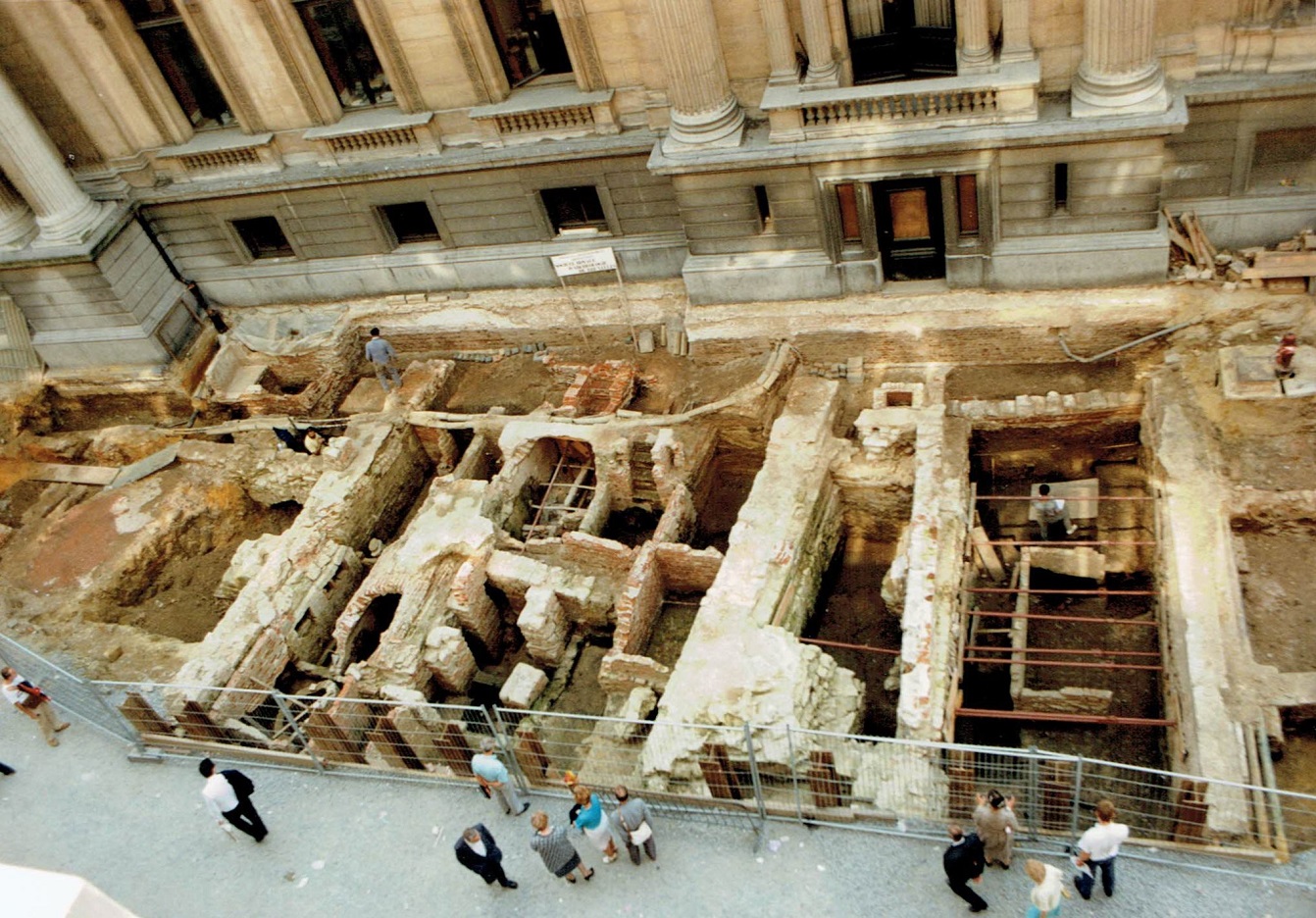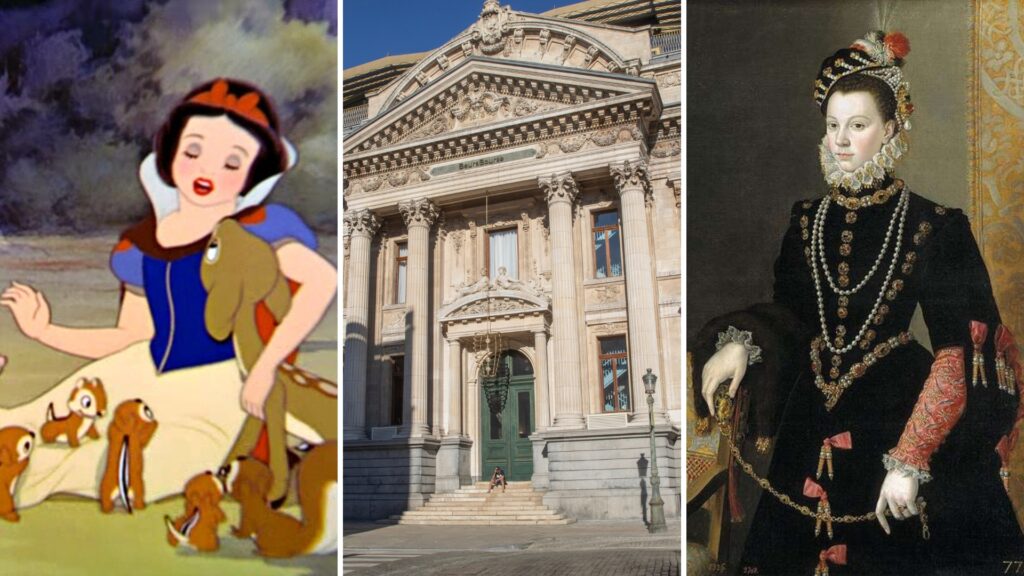Thousands of people pass by Brussels' iconic Bourse every year. Little do they know, they may be passing by the place where the real-life Snow White is buried. But the true story of her life reveals that, unlike in the fairytale, she did not live happily ever after.
Almost 90 years after she first appeared on the big screen, Snow White remains one the most legendary fairytale characters. Next year, she will be making a comeback in Disney's live-action remake. Rachel Zegler will play the lead role which caused some backlash – with some arguing that a woman with Colombian roots should not play a European character.
"I found that criticism interesting so I started looking into the story of Snow White. I found fairly quickly that several theories were circulating about the historical origins of the character," writer Kurt Deswert told The Brussels Times.
The most elaborate and plausible theory is one that Eckhard Sander, a German historian, spent more than 25 years of his life working on. He argued that the tale, originally written by Jacob and Wilhelm Grimm, is based on the life of German countess Margaretha von Waldeck (1533).
"Sander found out that the Grimm's sister had gone to a spa resort in Bad Wildungen, the region which Margaretha is from, and her story had been told there for 200 years," Deswert explained. This is likely how the brothers discovered the story.
Many elements that appear in the original fairy tale can be linked to her life story. Margaretha was reportedly a beautiful girl who, like Snow White, had lost her mother at a young age. Her father remarried a few years later. There was also a large forest in the area where she grew up, which is believed to be the role of the woods in the fairytale. There were also several mines in the area, employing many children and shorter people, hinting at the "Seven Dwarfs".
The most striking element that she has in common with the woman who captured millions of hearts is that she was poisoned at the young age of 21, a tragic death that occurred right here, in what is now the Belgian capital. This is also where she is believed to be buried.
Life (and death) in Brussels
Young Margaretha grew up in Waldeck, a principality and fiefdom of Hesse, which incidentally was located near where the brothers Grimm grew up.
Her father Philip IV, Count of Waldeck-Wildungen, introduced Lutheranism and Protestantism in their county in the early 16th century – a development which would sign the fate for the life of his daughter.
Several German counties converted to Lutheranism (a major branch of Protestantism) and came into conflict with Charles V, the extremely Catholic Holy Roman Emperor. Several battles ensued between Charles V and the German Counts, with the latter being heavily defeated. Her father's feudal lord was even captured by Charles V.
"Margaretha was likely sent by her father to the court of his aunt Mary of Hungary, located in what is now Brussels, as an attempt to smooth things over with Charles V, Mary's brother," Deswert explained. Mary of Hungary reportedly had Protestant sympathies, which also explains why Margaretha was able to enter the court without issue.

Bruxella 1238. Credit: Heritage Brussels
After moving here, her beauty immediately caught the eye of prominent nobles, including the crown prince Philip II of Spain, who was Mary's nephew and an extreme Catholic. In this climate, political and religious obstacles prevented any kind of relationship from ever blooming. This, researchers believe, is likely the reason why she was eventually poisoned with arsenic at 21.
Her cause of death is well-documented in various municipal records and documents, as was her burial in the Franciscan convent. The Bruxella1238 museum, where visitors can see the monastery ruins, is located under Bourse.
Unfortunately, it is unlikely that a grave or even a gravestone will be found. "In those days women's corpses were not registered. So it will be hard to distinguish her remains from those many female skeletons buried there."
Future tourist attraction?
When the managers of the Bourse were contacted about this theory, they were left dumbfounded. "They knew there was a link to Margaretha had been in Brussels, but were completely unaware of the theory that she was Snow White."
Across Belgium too, the story is little known – largely because the theory was never approached from the Belgian side. The German historian Sander published his book about it in 1994, which was followed by a ZDF (German public broadcaster) documentary which presents this as one of the possible theories, but Belgian authorities were never approached.

Snow white poisoned by the apple, by Franz Jüttner (1865–1925): Illustration from Sneewittchen, Scholz' Künstler-Bilderbücher, Mainz 1905.
Now that the link is known in Belgium, the story of Margaretha is worth re-telling, Deswert argued. "In the fairytale, she ends up living happily ever after with the prince, but in reality, this was a tragic story of a young girl who came to Brussels and was crushed by that religious and political power struggle."
Bergfreiheit in Bad Wildungen, located in the middle of Waldeck county, has capitalised on the theory that the fairytale character was based on her – they even created a tourist attraction around it, promoting itself as "Snow White Village".
Deswert argued that Brussels should also capitalise on the fact that it is the final resting place of the real Snow White, especially with the prospect of the live-action film. "This character is so well known, and you have to claim that as a city if you have that link."

